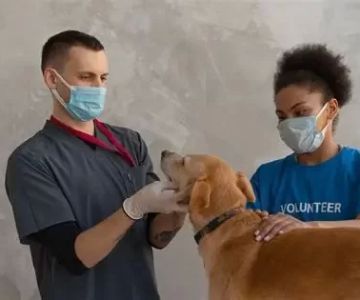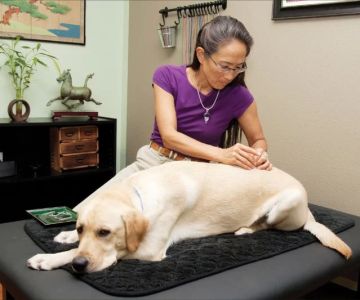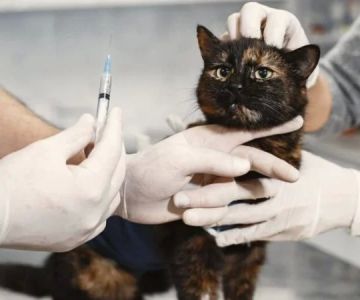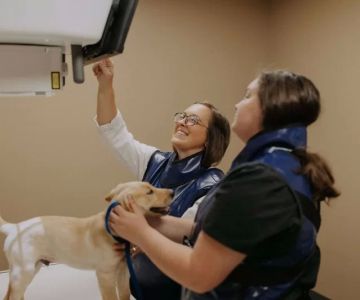How Much Schooling Does It Take to Become a Veterinarian?
- Overview: The Path to Becoming a Veterinarian
- Educational Requirements for Aspiring Veterinarians
- The Importance of Veterinary School and How Long It Takes
- Specialization and Post-Graduate Training
- Real-Life Experience: Hands-On Learning in Veterinary Medicine
- The Cost and Investment of Becoming a Veterinarian
- Conclusion: How Much Time and Effort Goes into Becoming a Veterinarian?
Becoming a veterinarian is a dream for many animal lovers, but one that requires dedication, years of schooling, and an unwavering passion for animal care. As a veterinary student myself, I’ve gone through the rigors of this career path and learned that it takes more than just a love for animals to become a successful veterinarian. So, how much schooling does it take to be a veterinarian? Let’s break it down, step by step, and explore the educational journey required to enter this rewarding profession.
Educational Requirements for Aspiring Veterinarians
The journey to becoming a veterinarian starts with earning a bachelor's degree, which typically takes four years. While you can major in various fields, most veterinary schools require applicants to have a strong foundation in science-related disciplines such as biology, chemistry, and animal science. I chose to major in biology during my undergraduate years, and looking back, I found that a solid understanding of biology and chemistry was essential to my success in veterinary school.
During my undergraduate years, I also learned that gaining experience in animal care—whether through volunteering at animal shelters, working as a veterinary assistant, or completing internships—was incredibly beneficial. Most veterinary schools require applicants to have hands-on experience working with animals. This practical experience helps you build a deeper understanding of animal behavior, health, and wellness. It also demonstrates your commitment to the profession, which can make a significant difference when applying to competitive veterinary programs.
The Importance of Veterinary School and How Long It Takes
After completing your bachelor’s degree, the next step is applying to a veterinary school, which typically takes another four years. Veterinary school is where you’ll gain specialized knowledge in veterinary medicine, including animal anatomy, pharmacology, and diagnostic techniques. The curriculum is rigorous and highly competitive, as veterinary schools aim to provide a comprehensive education in both theoretical knowledge and practical skills.
In veterinary school, the first two years are primarily focused on classroom learning, where students study subjects such as microbiology, pathology, and immunology. The last two years are spent gaining practical experience through clinical rotations, where students work with real animals in a variety of veterinary settings, such as clinics, hospitals, and shelters. This hands-on learning is crucial, as it allows students to develop the technical skills necessary to diagnose and treat animals in real-world scenarios.
Specialization and Post-Graduate Training
For those who wish to specialize in a specific area of veterinary medicine, additional years of study and training are required. Specializations can include areas such as surgery, dermatology, internal medicine, or exotic animal care. After completing veterinary school, veterinarians who want to become specialists must undergo additional training through internship and residency programs, which can take anywhere from 1 to 5 years, depending on the specialization.
For example, I have a friend who is pursuing a career in veterinary surgery. After completing veterinary school, she entered a three-year surgical residency program. During this time, she’s been learning advanced surgical techniques and gaining invaluable hands-on experience working with complex animal cases. Specialized training like this is important for veterinarians who want to provide advanced care in a particular field and is necessary for becoming a board-certified veterinary specialist.
Real-Life Experience: Hands-On Learning in Veterinary Medicine
While the educational requirements and technical skills are vital to becoming a veterinarian, real-life experience is equally essential. During my time in veterinary school, I was fortunate enough to complete clinical rotations in various areas of veterinary care. These included everything from emergency medicine and surgery to dermatology and dentistry. This hands-on learning allowed me to apply my theoretical knowledge to real animals, making me feel more confident and prepared to handle a variety of veterinary cases.
Beyond clinical rotations, I also participated in internships and volunteer programs at local animal shelters and rescue organizations. These experiences not only gave me exposure to different types of animals and medical conditions but also helped me develop strong communication and interpersonal skills, which are essential when working with pet owners and explaining treatment options.
The Cost and Investment of Becoming a Veterinarian
One thing that surprised me about pursuing a career in veterinary medicine was the cost of education. Veterinary school is expensive, and tuition fees can vary depending on the school you attend. On average, veterinary school tuition can cost between $30,000 and $60,000 per year, making the total investment for the entire education (bachelor’s and veterinary school) around $150,000 or more.
While the cost can be daunting, it’s important to remember that veterinarians are well-compensated for their hard work and education. According to the U.S. Bureau of Labor Statistics, the median annual wage for veterinarians is approximately $100,000. This is a good return on the investment of time and money required to become a veterinary doctor. Additionally, veterinarians with specialized skills or those who work in high-demand fields can earn higher salaries, making the long journey worth the effort for many individuals.
Conclusion: How Much Time and Effort Goes into Becoming a Veterinarian?
In conclusion, becoming a veterinarian requires a significant amount of schooling and training. On average, it takes around 8 years to complete the necessary education and training to become a veterinarian, including a 4-year bachelor’s degree and 4 years of veterinary school. If you wish to specialize, additional years of training and residency programs may be required. While the journey can be long and expensive, the rewards of working as a veterinarian—helping animals and making a difference in the lives of their owners—make it a deeply fulfilling career choice.
If you’re interested in learning more about pursuing a career as a veterinarian or are looking for resources to help you along the way, check out Scent Snob. They offer a variety of guides and helpful tools to support aspiring veterinarians in their education and career journey.
SEO Title: How Much Schooling Does It Take to Become a Veterinarian?
SEO Keywords: how much schooling to be a veterinarian, veterinary education, becoming a veterinarian, veterinary school, veterinary doctor schooling, how long to become a veterinarian
SEO Description: Wondering how much schooling it takes to become a veterinarian? Learn about the educational path, time commitment, and training needed to become a successful veterinarian. Find out more with Scent Snob.











